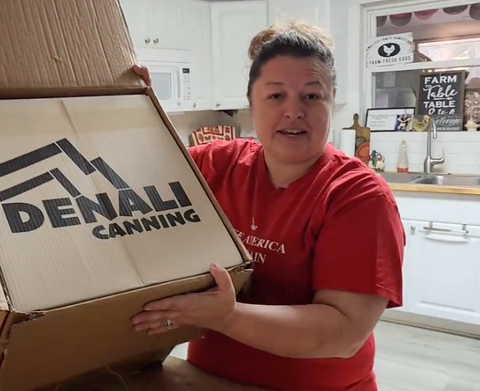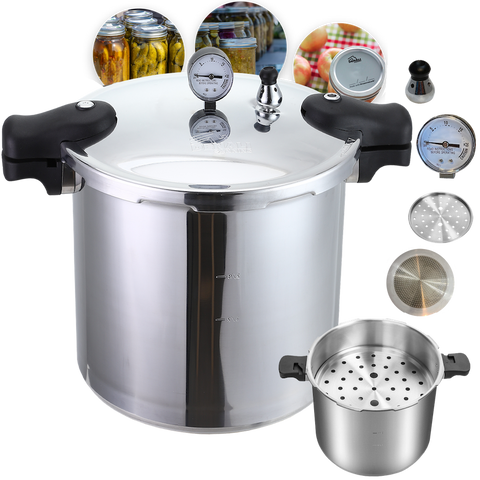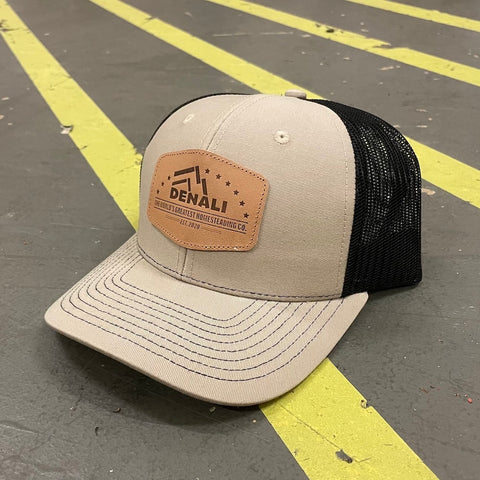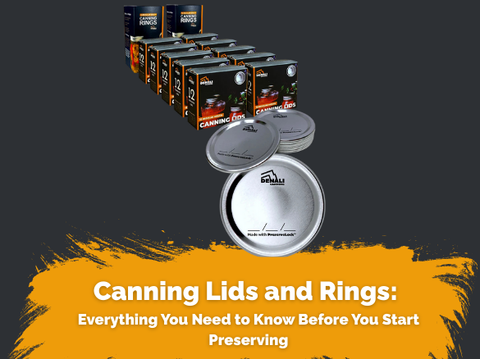Preserving food at home is a timeless tradition that brings families together, reduces food waste, and lets you enjoy seasonal produce year-round. If you're thinking about getting started with home canning, you're in for a rewarding experience. But before you dive in, it’s important to understand the canning materials you’ll need.
Whether you’re stocking your pantry with homegrown tomatoes, pickling cucumbers, or preserving fresh fruit jams, having the right equipment makes all the difference. In this guide, we’ll walk you through the essential canning supplies especially focusing on one of the most important components Canning Lids and Rings.
Why Use the Right Canning Materials?
Canning is more than just placing food in jars. It’s a science of preserving food safely. Using the correct materials ensures your food stays fresh and free from contamination. Investing in quality canning supplies also saves time, reduces spoilage, and keeps you and your family safe.
Must-Have Canning Materials for Beginners
Here are the essential tools and materials you'll need to start your home canning journey:
1. Canning Jars
Canning jars come in various sizes, such as half-pint, pint, and quart. Choose the size based on what you’re preserving. For instance, jams and jellies usually go in smaller jars, while vegetables and fruits often use quarts.
Make sure your jars are specifically made for canning. Regular glass jars, like recycled pasta sauce containers, are not safe for pressure or water bath canning.
2. Canning Lids and Rings
This is where it gets really important. Canning lids and rings form the vacuum seal that keeps your food fresh and prevents bacteria from entering the jar.
There are two main parts:
-
Lids – These are flat metal disks with a sealing compound on the underside. They’re used once to create a secure seal.
-
Rings– These screw onto the jars to hold the lid in place during the canning process. Rings can be reused many times.
You’ll find different sizes for jars:
-
Regular mouth canning lids and rings – Regular mouth canning lids and ring fit standard jars and are perfect for jams, sauces, and fruits.
-
Wide mouth canning lids and rings – These are better for larger items like pickles or whole peaches, as they’re easier to fill and empty.
Explore high-quality lids and rings at Denali Canning — built to deliver strong seals and reliable results.
3. Jar Lifter
This tool helps you safely lift hot jars in and out of the canner. It's a must-have for avoiding burns and keeping jars upright.
4. Canning Funnel
Filling jars can be messy. A canning funnel makes the process cleaner and faster, especially when pouring hot liquids.
5. Bubble Remover and Headspace Tool
This helps you remove air bubbles trapped inside your filled jars and measures the headspace (the space between the food and the lid).
6. Canner
There are two types of canners:
-
Water Bath Canner – Best for high-acid foods like fruits, jams, pickles, and tomatoes (with added acidity).
-
Pressure Canner – Necessary for low-acid foods like vegetables, meats, and poultry. It reaches higher temperatures needed to kill harmful bacteria.
Understanding Canning Lids and Rings in Detail
Not all lids and rings are made equal. Choosing quality canning lids and rings ensures a strong vacuum seal — the most important part of safe home canning.
Regular Mouth Canning Rings
These are ideal for jars used for jams, jellies, salsas, and sauces. They provide a tight grip for smaller openings and are commonly used in everyday canning.
Wide Mouth Canning Rings
These are perfect for bulkier foods or recipes that need more space. They're easier to fill, especially for things like pickle spears, whole fruits, or layered meals in jars.
Regular Mouth Canning Lids
Smaller in diameter, these fit regular mouth jars. They seal tightly and are designed for one-time use to ensure the best safety.
Wide Mouth Canning Lids
These offer a larger sealing surface and are often used for canning soups, vegetables, or anything chunky.
Denali Canning offers premium-grade regular and wide mouth lids and rings. Their products are BPA-free, rust-resistant, and tested for durable, airtight seals — giving you confidence in every jar you preserve.
Reusable vs. Single-Use Lids: What You Need to Know
Canning lids are generally designed for one-time use. After a successful seal and storage, the sealing compound is no longer effective for another canning session. Trying to reuse lids can lead to failed seals and food spoilage.Canning rings, however, are reusable — just make sure they’re not bent or rusted before each use.Stock up on extra lids before canning season starts! Visit Denali Canning to grab value packs of both regular and wide mouth lids and rings.
Safety Tips for Canning
-
Inspect lids and rings before use. Make sure lids are clean and rings aren't warped.
-
Follow tested canning recipes to ensure proper acidity and processing times.
-
Don’t over-tighten rings. Just “finger-tight” is enough to let air escape during processing.
-
Label your jars with contents and date before storing.
-
Store sealed jars in a cool, dark place and use within a year for best quality.
How to Know Your Jars Are Properly Sealed
Once your jars cool for 12-24 hours, check the seal:
-
Press down in the center of the lid. If it doesn’t move or pop, your jar is sealed.
-
If the lid flexes, it didn’t seal properly. You can refrigerate and use the food right away or reprocess with a new lid.
Conclusion
Getting started with canning may feel overwhelming at first, but having the right canning materials makes the process smooth and successful. From jars to funnels, and especially your Canning Lids and Rings, each tool plays a vital role in preserving food safely.
Whether you need regular mouth canning lids, wide mouth canning rings, or full sets, investing in quality supplies sets you up for canning success.









Comments (0)
There are no comments for this article. Be the first one to leave a message!